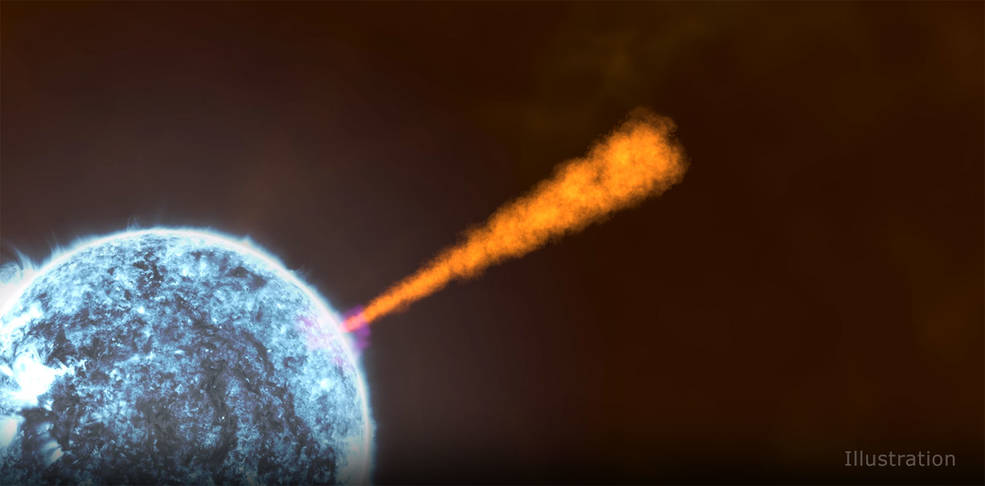
Discovering GRB 221009A, the brightest gamma-ray burst ever recorded, has ignited scientific curiosity. This remarkable event, observed on October 9, 2022, surpassed all previous records in luminosity and energy. In this article, we delve into the unique characteristics of GRB 221009A and the insights gained from NASA’s NuSTAR observatory, shedding light on the enigmatic world of gamma-ray bursts.
Unveiling GRB 221009A: The Brightest Burst on Record
GRB 221009A, nicknamed BOAT (Brightest Of All Time), astounded scientists with its extraordinary brightness and energy. Follow-up studies revealed that GRB 221009A was 70 times brighter and significantly more energetic than any previously observed gamma-ray burst. Despite the ongoing quest to understand the reasons behind this exceptional event, valuable clues have emerged from the data obtained by NASA’s NuSTAR observatory.
Unique Insights from NuSTAR Observations
A recent study published in Science Advances, based on NuSTAR’s observations, has provided crucial insights into the unprecedented characteristics of GRB 221009A. The collapsing star expelled a jet of material with a previously unseen shape among gamma-ray burst jets, along with other distinctive features. These exceptional properties may be influenced by the progenitor star itself, including its physical properties such as size, mass, density, or magnetic field. Alternatively, alternative mechanisms may be responsible for launching such intensely bright gamma-ray jets into space.
Excitement Surrounding the Discovery
Brendan O’Connor, lead author of the study and an astronomer at George Washington University, expressed enthusiasm for the findings. The unique combination of exceptional brightness and distinct jet structure in GRB 221009A provides valuable clues about the explosion of the star, even though direct observations of the star are impossible. The data obtained from NuSTAR’s observations contributes to our understanding of this cosmic phenomenon.
Gamma-Ray Bursts: Unveiling the Invisible
Gamma-ray bursts, the most energetic form of light in the universe, are invisible to the human eye. Originating from galaxies beyond the Milky Way, their brightness allows for detection even over immense distances. These bursts exhibit varying durations, with some lasting only a few seconds while others, known as long gamma-ray bursts, emit gamma rays for over a minute. They can also emit other wavelengths of light for extended periods.
GRB 221009A: An Intense Long Gamma-Ray Burst
GRB 221009A, classified as a long gamma-ray burst, was so intense that it overwhelmed most gamma-ray instruments in space. However, scientists were able to reconstruct its true brightness by analyzing data from NASA’s Fermi Gamma-ray Space Telescope. Additionally, GRB 221009A was observed by NASA’s Hubble and James Webb space telescopes, as well as the agency’s Wind and Voyager 1 spacecraft, along with the European Space Agency’s Solar Orbiter.
Distinctive Jet Structure of GRB 221009A
Gamma-ray bursts typically feature a jet emanating from the collapsing star, analogous to a forceful ejection from a fire hose, with gamma rays originating from the hot gas and particles within the jet’s core. GRB 221009A’s jet, however, displayed notable distinctions. Previous observations revealed compact gamma-ray burst jets with minimal stray light or material outside the narrow beam. In contrast, GRB 221009A exhibited a jet with a narrow core and wider, sloping sides, a unique configuration. Moreover, the energy of the material within the jet varied, a phenomenon unprecedented in long gamma-ray bursts.
Insights into Gamma-Ray Jets
While direct imaging of gamma-ray jets is challengingdue to their vast distances, astronomers can study the emitted light to glean valuable information. By analyzing the light emitted and cross-referencing data from multiple X-ray telescopes, including NASA’s Neil Gehrels Swift Observatory, Neutron star Interior Composition Explorer (NICER), and ESA’s XMM-Newton telescope, scientists have been able to decipher important details, akin to examining footprints in the snow.
GRB 221009A, the brightest gamma-ray burst ever observed, continues to captivate scientists. Through meticulous observations and the utilization of advanced technologies, the unique characteristics of this exceptional event are gradually being unraveled. It provides valuable insights into the enigmatic world of gamma-ray bursts, raising new questions and igniting further avenues of scientific inquiry.
Image Source: NASA’s Goddard Space Flight Center